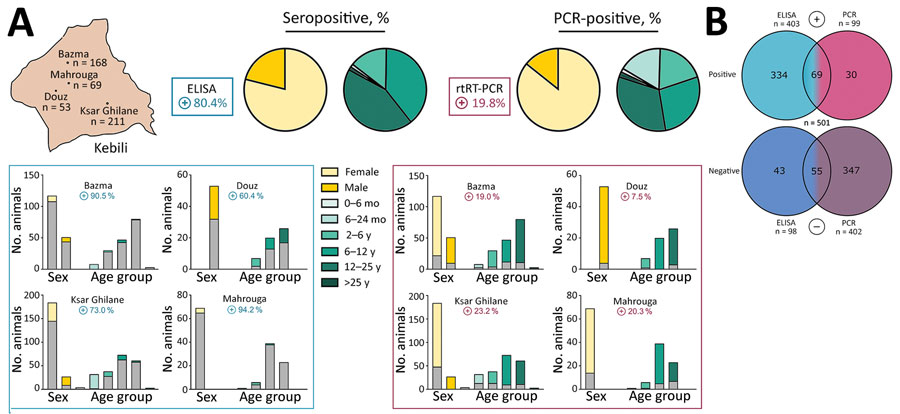Volume 27, Number 7—July 2021
Dispatch
Prevalence of Middle East Respiratory Syndrome Coronavirus in Dromedary Camels, Tunisia
Figure 1

Figure 1. MERS-CoV prevalence in dromedary camels, Tunisia. A) Overview of seropositive and PCR-positive dromedaries from 4 different sampling areas (Appendix), by sex and age group. Blues boxes represent seropositive dromedaries and purple boxes PCR-positive dromedaries. Bars in chart represent total number of sampled animals; gray-shaded bar sections represent total number of MERS-CoV–positive animals. In the Douz area, all dromedary camels sampled were used for patrol or transport purposes and were exclusively adult male animals. B) Distribution of ELISA (blue) and PCR (purple) results, by number. Bright colors represent positive results, dark colors negative results; 2-colored areas represent animals that are either positive for both ELISA and PCR or negative for both. MERS-CoV, Middle East respiratory syndrome coronavirus.
1These authors contributed equally to this article.